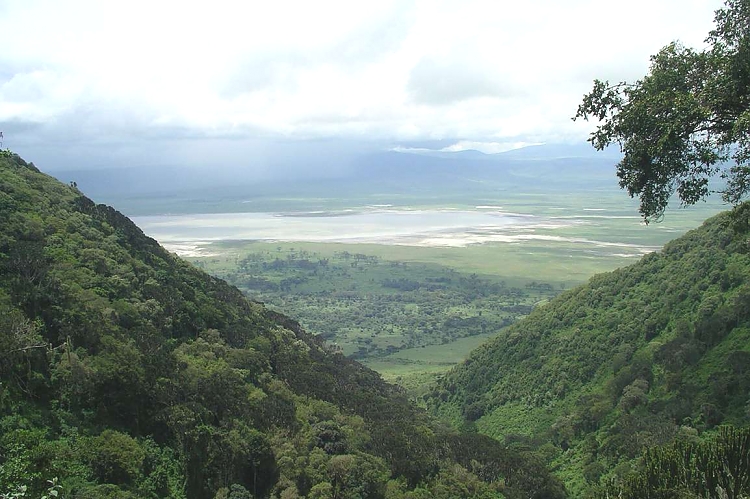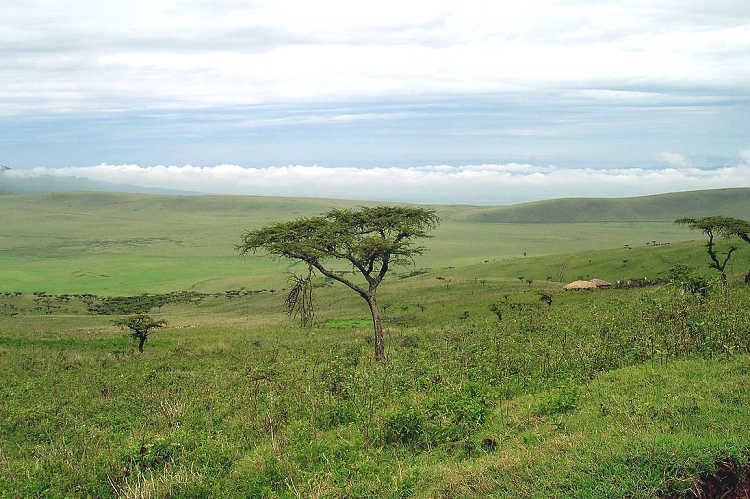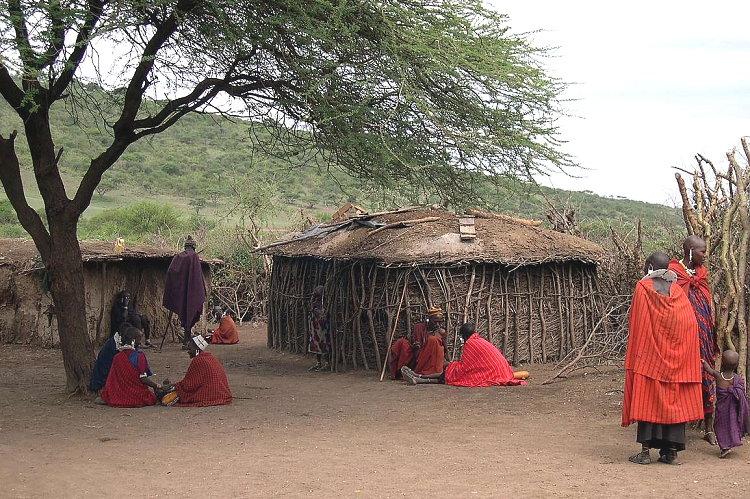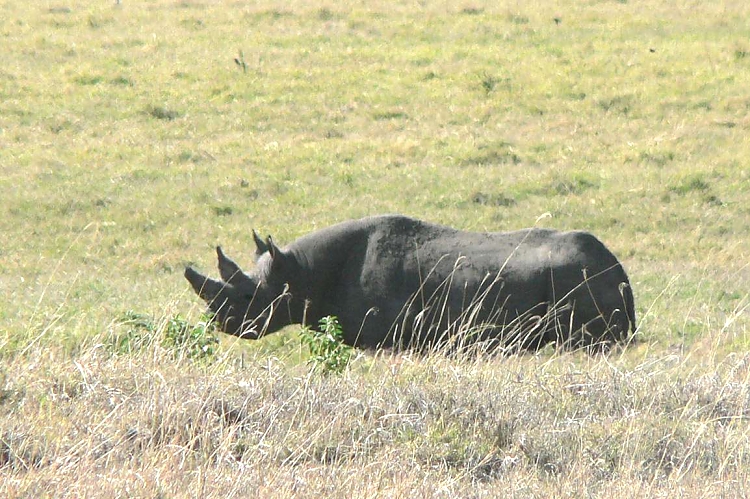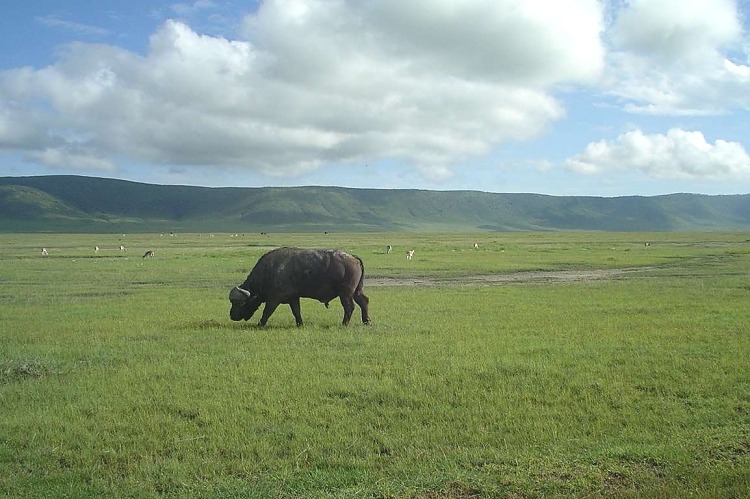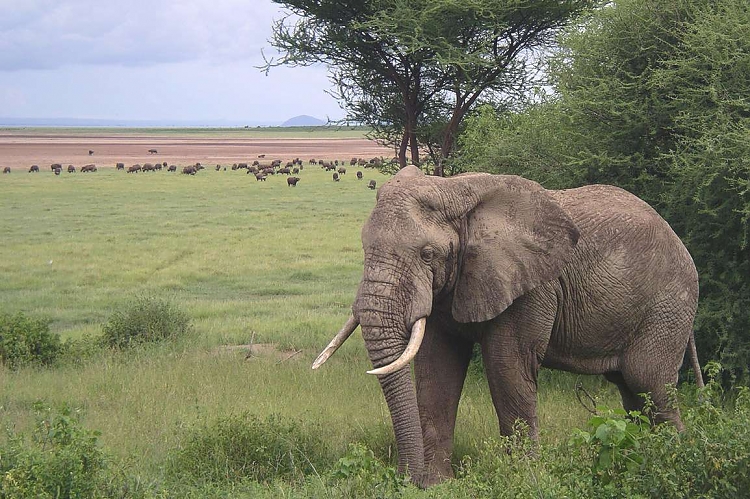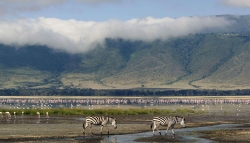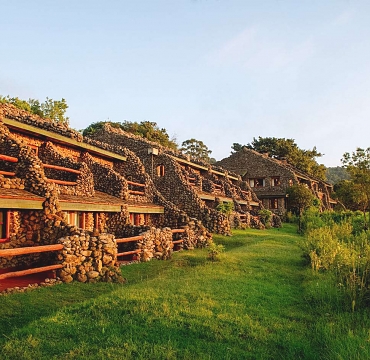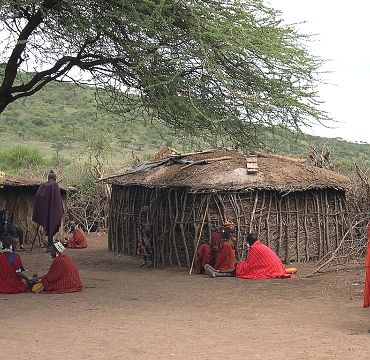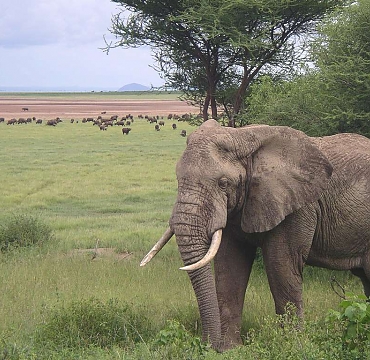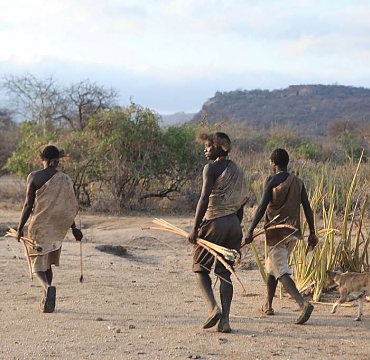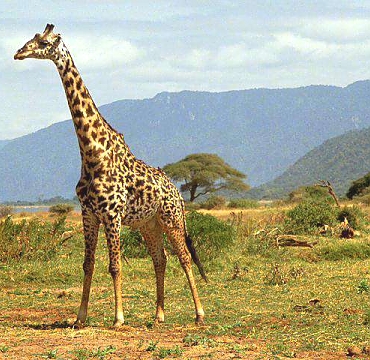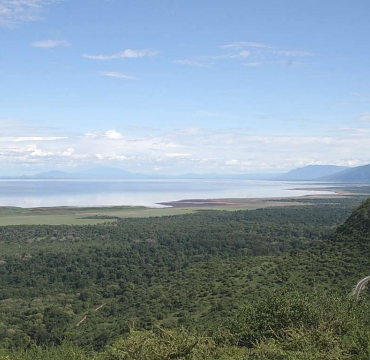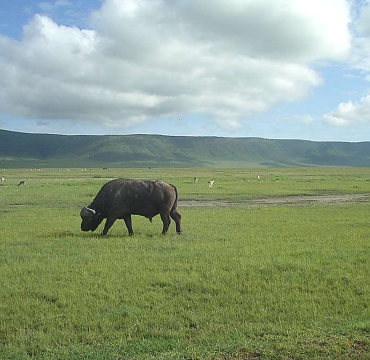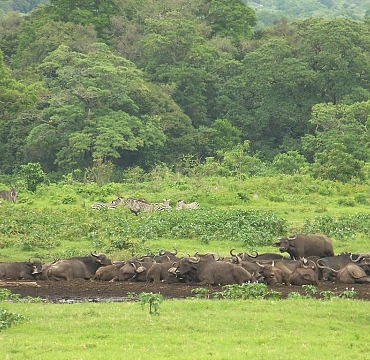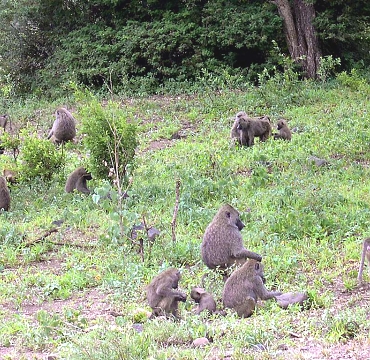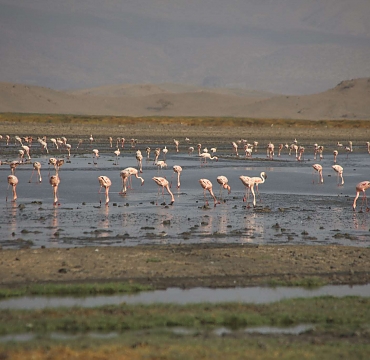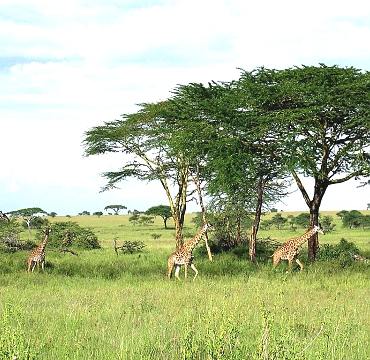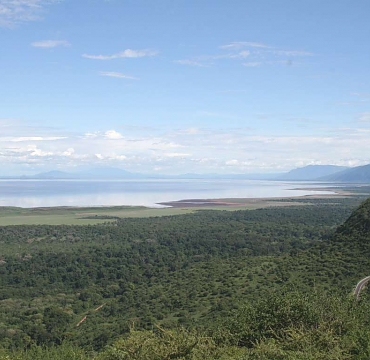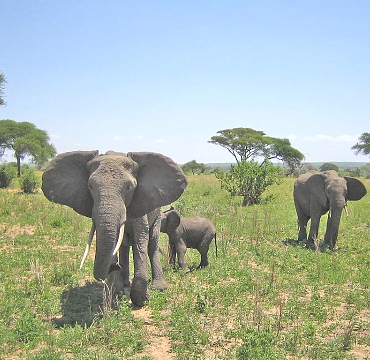The Ngorongoro Crater is one of the world's natural wonders, the Ngorongoro Crate is the land of the Maasai of their Cattle and of the fauna, this protected area is located in the Great Rift Valley gigantic fracture of the earth's Crust. Volcanoes, mountains, plains, lake, forest and Archaeological sites from this magnificent land escape. At 2,286 Mts above sea level, is the largest unbroken caldera in the world.
Surrounded by very steep walls rising 610 meters from the crater floor, this natural amphitheatre cover an area of about 260 sq km that's 100 sq miles, and is home to up 30,000 animals in an area naturally enclosed by the slopes of the volcano (bit the animals can leaves) it's called the eight wonder of the world. The Ngorongoro Conservation Area covering 8292 sq Kms It is bounded by Lake Eyasi in the southwest and the Gol-Mountains in the north.
Roughly in the center is the Olbalal Swamp and the arid Olduvai Gorge It boasts of the finest blend of landscapes, wildlife, People and Archaeological sites in Africa it is also a pioneering experiment in multiplicand use.
Location:
The Ngorongoro Conservation Area is 190Kms West of Arusha it is 4 hours drive or 1 hour Charter flight. From lake Manyara is 60 Kms just a 2 hours drive. Also the Ngorongoro Conservation Authority staff bus shuttle between Arusha town and the park (H.Q.) Headquarter runs twice daily in each direction, stopping at Karatu and Mto wa Mbu.
Oldupai Gorge:
Located within the Ngorongoro Conservation Area, it is 180 km from Arusha. Humans have been Part of Ngorongoro landscape for millions of years. The earliest signs of mankind in the conservation area are at La-etoli, where hominid footprints have been preserved in volcanic rock for the past 3,600,000 years. The story continues at oldupai (Oldupai) Gorge, a river Canyon cut 100mts deep through the volcanic soil of the Serengeti Plains.
Best time to visit:
The whole year; April is the rain season. Also don't miss a whole day in the crate where the show never stops while watching the sunset above the crater.
Bird life: More than 100 species of birds not found in the Serengeti have been spotted here, Bird found in Ngorongoro includes flamingos and other water birds.
Wild life: Has over 30,000 large animals including some of Tanzania's last remaining black rhino. Animals are free to leave or enter the Crater but most of them stay because of the plentiful water and food available on the crater floor throughout the year.
Access: There are Organized Safaris from Arusha for those with no transport. In the crater itself, for most of the year, only 4-wheels drive Vehicles are allowed.
To do: A trip to the Oldupai Gorge (visit the paleontology museum) where the Australopithecus Boise's skeleton was discovered. A walking Safari to Maasai Country with donkeys (2 days minimum).
Accommodation: A lodge and a rest house and Camp sister some of the lodges and Camp sites are Ngorongoro crater Lodge, Ngorongoro Serena Lodge, Ngorongoro Sopa Lodge, Ngorongoro Wildlife Lodge, Rhino Lodge and Simba Campsite.
 FR
FR IT
IT DE
DE RU
RU